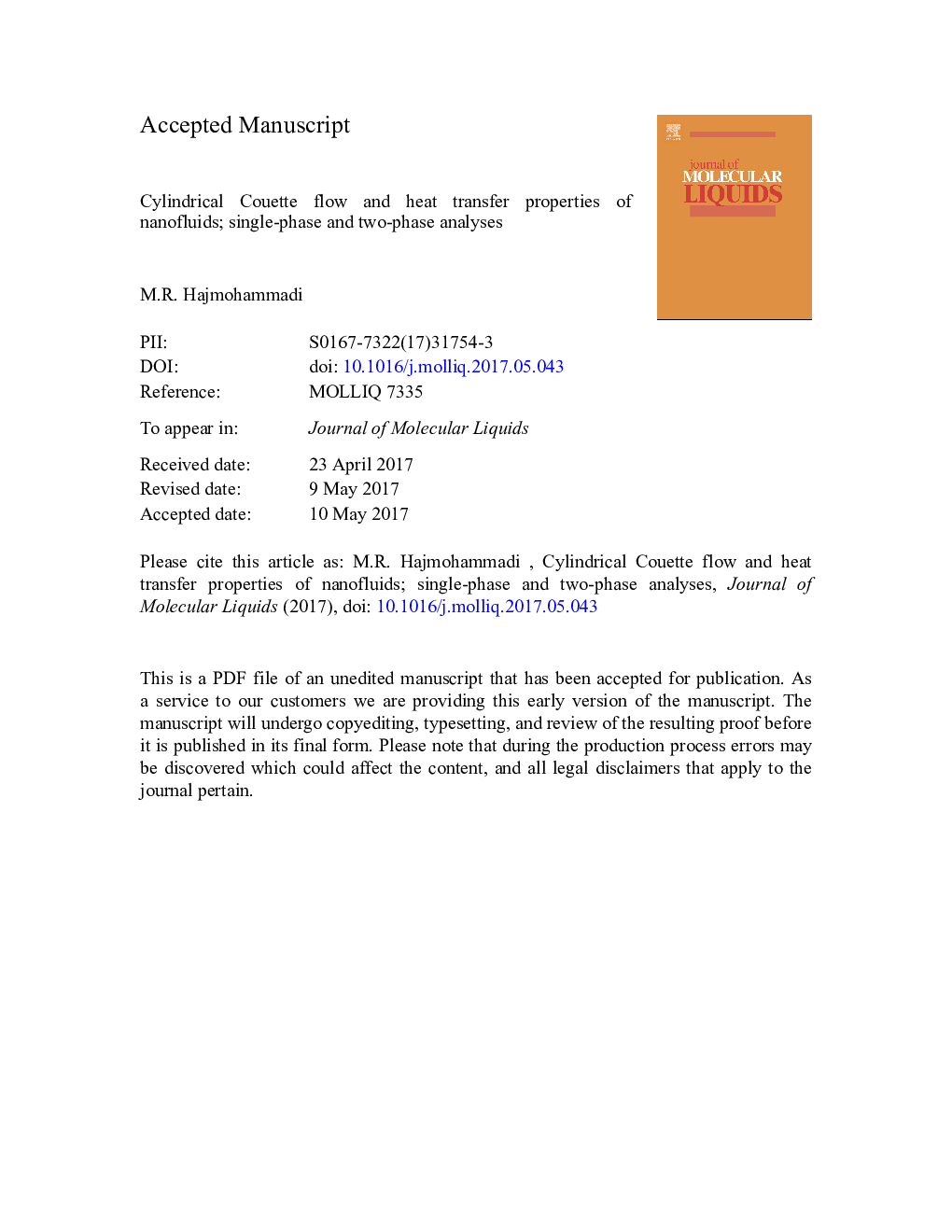| Article ID | Journal | Published Year | Pages | File Type |
|---|---|---|---|---|
| 5408047 | Journal of Molecular Liquids | 2017 | 48 Pages |
Abstract
A theoretical study is carried out to deliver the effects of the metallic nanoparticles on the hydrodynamic and thermal characteristics of a liquid confined in a cylindrical domain. Single-phase and two-phase models are applied, and the numerical results of two-phase model are compared with analytical results of single-phase model. In the two-phase model, the nanofluid inhomogeneity, Brownian motion and thermophoresis effects are taken into account. Contrary to what is usually assumed in literature, the nanofluid inhomogeneity is incorporated in the thermophysical properties of the nanofluid, i.e., the nanofluid thermophysical properties are considered variable with respect to the spatial variation of nanoparticles volume fraction throughout the domain. The results demonstrate that the nanofluid yields significant thermal improvement with a relatively lower rise in shear stress at the inner and outer surfaces of the cylindrical domain. However, compared with the results of two-phase model, the hydrodynamic and thermal impacts of nanoparticles evaluated by single-phase model are normally overestimated, depending on the ratio of thermophoretic and Brownian diffusions, the radius ratio of cylinders and the Brinkman number.
Related Topics
Physical Sciences and Engineering
Chemistry
Physical and Theoretical Chemistry
Authors
M.R. Hajmohammadi,
